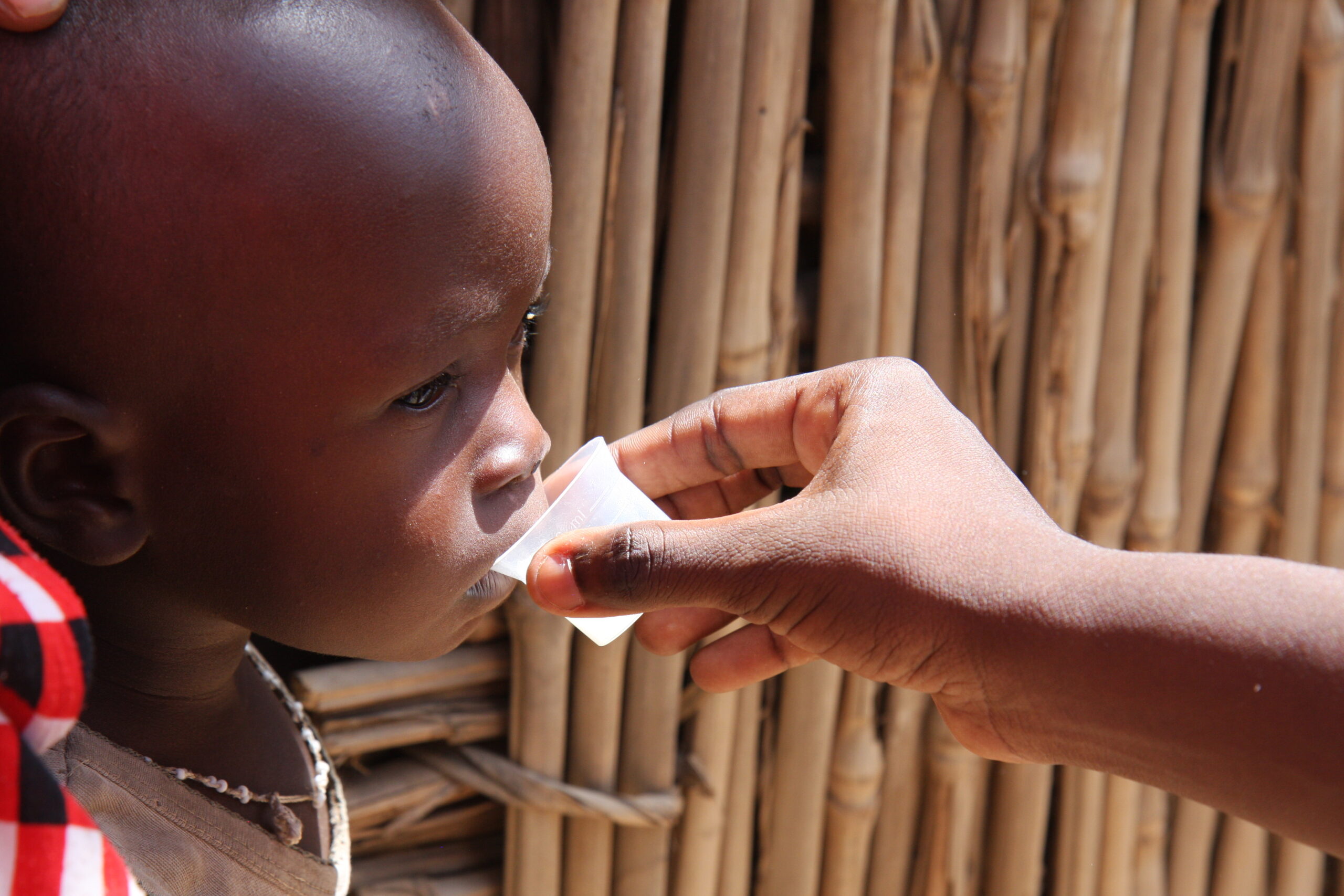Blog | Groundbreaking Study Could Revolutionize Public Health

A large study in sub-Saharan Africa finds a significant decline in mortality among children 5 years and younger who receive azithromycin twice a year. This child is in Dosso region in Niger. (Photo: The Carter Center)
A landmark study in which The Carter Center is participating could radically change the public health model in the developing world, experts say.
The multi-year, three-country study, published in the New England Journal of Medicine in April 2018, confirms a 2009 study led by The Carter Center that found that mass administration of the antibiotic azithromycin for the infectious eye disease trachoma showed significant collateral benefits in reducing mortality in children under 5 years of age.
“The results mean that azithromycin for trachoma can control the disease and save lives,” exulted Kelly Callahan, director of the Carter Center Trachoma Program. “This is a public health dream come true.”
During the 24-month first phase of the study, known by the French acronym MORDOR, researchers randomized 1,533 communities in Niger, Malawi, and Tanzania, chosen to reflect some of the geographical diversity of Africa. All young children in a given community received either a single dose of oral azithromycin or a placebo four times over two years. During visits to these communities, the researchers enrolled all selected children who were between one month and 5 years old — about 190,000 children each time. By the end of the trial, child mortality in the azithromycin-treated communities was 13.5 percent lower overall than it was in the communities that received the placebo.
The greatest improvement was seen in azithromycin-treated communities in Niger, where child mortality from all causes fell by 18 percent during the study period. The results were notable but less dramatic in Malawi and Tanzania, where childhood mortality rates are lower to begin with.
MORDOR was led by scientists from the University of California, San Francisco; Jeremy Keenan, MD, MPH, the study’s first author, explained how the study could change public health protocols:
“We could scale our newly studied intervention to reach millions of vulnerable children in resource-poor countries, in much the same way that trachoma programs, which give children and adults a single dose of azithromycin each year, have been doing for years,” he said.
Since 1998, The Carter Center has worked with the Niger Ministry of Health to eliminate trachoma as a public health problem; a key element of the program is mass distribution of azithromycin (brand name Zithromax®), which is donated by the manufacturer, Pfizer Inc.
Ahmed Arzika, a Carter Center epidemiologist in Niger who is a co-author of the study, said: “If mass drug administration (MDA) can reduce childhood mortality as it did in Niger, that’s a win for public health and an endorsement of MDA for other programs in other places.”
MORDOR (whose French title translates as Mortality Reduction After Oral Azithromycin: Mortality Study), was funded by the Bill & Melinda Gates Foundation and run in partnership with The Johns Hopkins University School of Medicine, the London School of Hygiene & Tropical Medicine, The Carter Center, the Blantyre Institute for Community Outreach, and the National Institute for Medical Research, as well as the governments of Malawi, Niger, and Tanzania.
The World Health Organization is so impressed with the data that it created a group to develop guidelines for reviewing evidence from similar studies, for the purpose of creating treatment parameters. This could result in totally different public health programming in the under-5 age range, Callahan said.
“The results from the MORDOR study could open a door to a revolution in the way public health is done, not only in Niger but elsewhere as well,” said Arzika, who oversees MORDOR operations in Niger. “Not only trachoma programs will benefit, but other diseases also. It’s really a matter of access to the medicines in these hard-to-reach rural areas.”
The next phase of the study, already underway, will go on for another two years in Niger only; it entails watching to see if the benefits can be sustained and monitoring for the development of resistance to the antibiotic.
“The ability to perform a census every six months in almost 600 communities with very high participation rates is a testament to the dedication, hard work, and organizational skills of the Carter Center’s Niger office,” author Keenan said. “We have enjoyed working with The Carter Center and look forward to continuing this community-based research with the Niger team in the future.”
MORDOR confirms the findings of a 2009 study The Carter Center and UCSF conducted with the Amhara Regional Bureau of Health in the Amhara region of Ethiopia, where The Carter Center plays a significant role in demonstrating the elimination of trachoma in a densely populated and highly endemic country.
“The MORDOR results confirm what we have suspected for many years,” said Dr. Paul Emerson, director of the International Trachoma Initiative at the Task Force for Global Health. “The benefits of the Global Trachoma Elimination Program go far beyond freedom from trachoma. The program is saving lives.”
Related Resources
Feature Story | Carter Center’s Trachoma Control Program Celebrates 20 Years of Impact »
Blog | Partnership Has Had Trachoma on the Run for 20 Years »
Press Release | Preventive Use of Common Antibiotic Reduces Child Mortality in Sub-Saharan Africa »
NEJM | Azithromycin to Reduce Childhood Mortality in Sub-Saharan Africa »
Learn more about the Carter Center’s Trachoma Control Program »
Global Impact Starts with You
Your support sustains the Carter Center's mission of waging peace, fighting disease, and building hope around the world.
